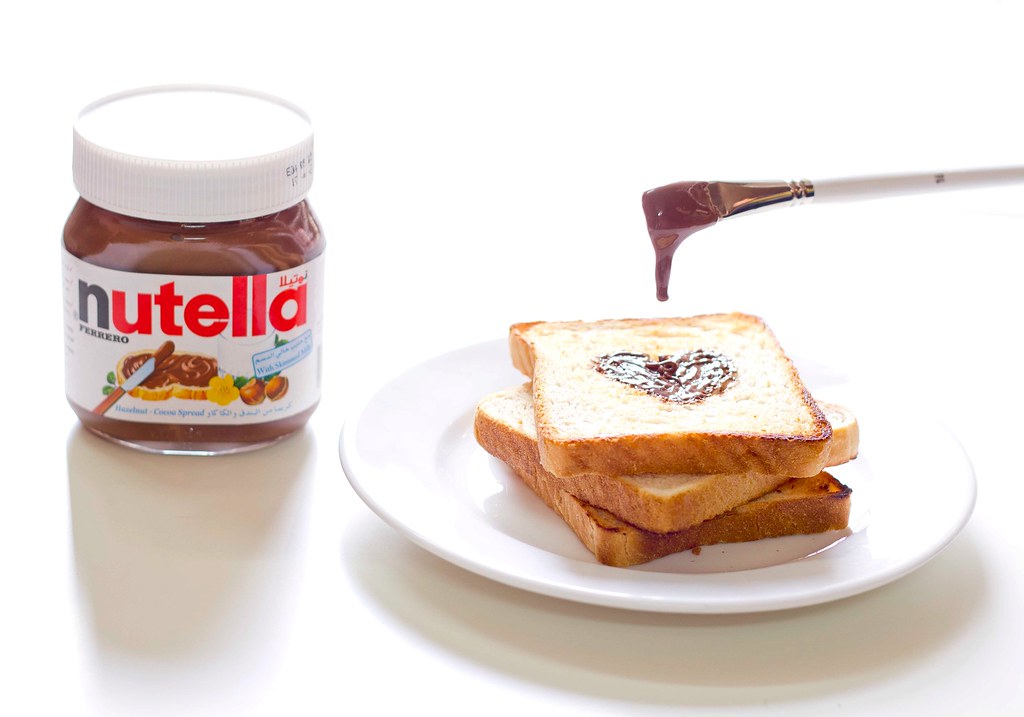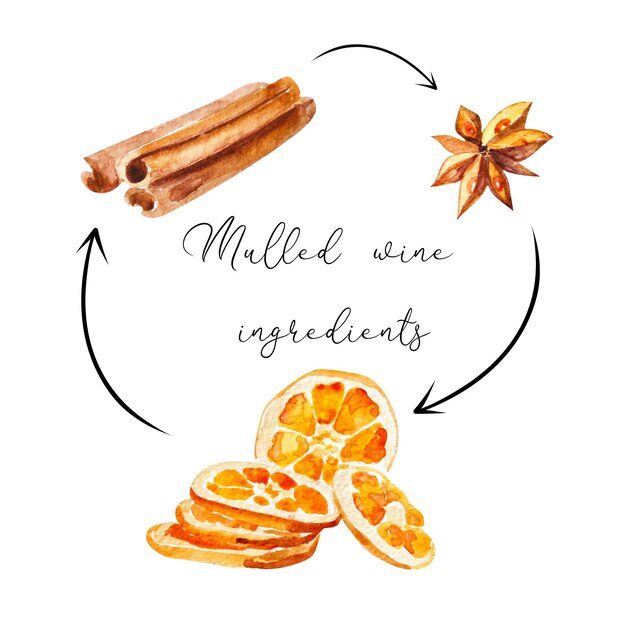Irish cuisine, famous for its honest and simple approach to cooking, often becomes the subject of criticism. While many appreciate its hearty, comforting dishes that take full advantage of the country’s rich natural bounty, others express a lesser enthusiasm. This article aims to delve into the reasons behind such diverse opinions, turning a critical eye on the elements that incite negative thoughts towards Irish cuisine.
It’s fairly common to hear disparaging remarks about Irish food, usually focusing on its alleged lack of sophistication or diversity. People often argue that the country’s fare lacks the variety, complexity, and creativity witnessed in other regions, painting Ireland’s culinary picture with a rather broad and lackluster brush.
In contrast, Irish food enthusiasts highlight the cuisine’s wholesome nature, a unification of land and sea reflecting the country’s agricultural and fishing traditions. Devotees of this earthy culinary tradition proclaim that its minimalist preparation methods allow natural flavors to shine through, thereby appreciating the country’s predominantly rustic and farm-to-table approach.
Is the harsh critique pasted on Irish food justified? Or are we missing out on something intrinsically valuable that constitutes Irish culinary culture? To make sense of the varied viewpoints, we need to examine the historical, cultural, and socio-economic factors that shaped Irish cuisine and its global perception.
AN INSIGHT INTO THE WORLD OF IRISH GASTRONOMY
The culinary heritage of Ireland spans centuries, with deep-rooted traditions shaping its unique gastronomy. Yet, it has often found itself the target of critique. Before delving into the reasons behind these criticisms, it’s vital to have a basic understanding of Irish cuisine itself.
Famed for its simplicity, Irish food largely relies on hearty, locally available ingredients. In the agrarian Irish countryside, dishes often spotlight quality local produce such as tuberous vegetables (for instance, potatoes), different types of meat, especially pork, and dairy products. Unprocessed, homegrown, and farm-to-table ingredients capture the essence of this cuisine.
THE SIGNIFICANCE OF POTATOES IN IRISH DISHES
Possibly one of the most notable elements of Irish food culture is the iconic potato. Often wrongly derided as boring or uncreative, the potato forms the backbone of many popular dishes. It’s a staple item, capable of being transformed into comfort-inducing dishes like Colcannon (a medley of mashed potatoes, kale, and milk) or Boxty (traditional potato pancake).
Nonetheless, Irish gastronomy — contrary to popular belief — extends well beyond potatoes. It boasts a broad repertoire of seafood dishes, thanks to the country’s extensive coastline. Freshwater fish especially salmon and trout also feature prominently. Traditional baking holds a special place as well, with Irish soda bread being globally acclaimed.
DELICACIES OF IRISH CUISINE
- Irish Stew: One of the ultimate comfort foods, Irish stew typically includes lamb, potatoes, and onions, slow-cooked to perfection to allow the flavors to fully develop.
- Barmbrack: A fruity tea bread traditionally served around Halloween, Barmbrack is a symbol of Irish folklore and culture.
- Full Irish Breakfast: A quintessential start to the day in Ireland, it consists of a protein-rich platter filled with bacon, eggs, sausage, black and white pudding, alongside tomatoes, and potato farl.
Despite the diversity in its culinary offerings, Irish food has often received criticism. Critics often cite reasons such as blandness, over-reliance on potatoes, and simplicity. However, understanding the context and tradition behind these dishes is key to truly appreciating Irish cuisine in all its rustic glory.
THE PREDETERMINED CONCEPT ABOUT IRISH CUISINE
When people think about Irish culinary traditions, many often dwell on a predetermined, typically negative, perception. It’s a country renowned for its natural beauty, delightful music, rich history, and enchanting folklore, but the culinary tradition seems to often be sidestepped or dismissed outright as unimpressive and bland.
This stereotype of Irish dishes being mundane and unexciting seems to be deeply rooted in the global collective opinion. The factors creating this biased imagery range from historical influences to various cultural misperceptions.
THE IMPACT OF HISTORY
In past centuries, Ireland’s culinary scene largely relied on simple, readily available ingredients. The limited palate often leads outsiders to view the food as flavorless. Indeed, historic Irish meals might revolve around a palette majorly built of potatoes, root vegetables, and plain grains. The simplicity of these dishes had its roots in the necessity and survival, rather than culinary exploration or the joy of diverse tastes. The nation’s past struggles with famine have also greatly influenced their food culture – a reality often overlooked by critics.
STEREOTYPES VERSUS REALITY
However, reducing Irish cuisine to just a handful of stereotyped dishes undermines its true culinary diversity and richness. In reality, Ireland’s food scene widely ranges, marked by a focus on fresh, locally sourced ingredients. Country boasts an impressive array of dishes such as shellfish, handmade cheeses, artisan breads and a vibrant evolution of modern Irish cuisine with creative chefs breaking the old stereotypes.
- Fresh, locally-sourced ingredients: Irish chefs place a high value on the quality and source of ingredients, with an emphasis on regionally produced options. This gives their dishes a fresh, authentic flavor.
- Seafood: Given Ireland’s extensive coastline, it shouldn’t be surprising that seafood features prominently in Irish cuisine. Rich seafood stews and smoked salmon are popular dishes that showcase Irish chefs’ skill and creativity.
- Modern Irish cuisine: Today, Irish cuisine is undergoing an exciting evolution. There’s a growing trend towards innovative, modern dishes that still respect and reflect traditional Irish culinary roots.
Perhaps it’s time to reframe the way we think of Irish food, moving on from antiquated stereotypes and embracing the diverse, fresh, and innovative cuisine that Ireland now proudly serves.
DIGGING DEEPER INTO THE CRITIQUES: AN EVALUATION OF IRISH COOKERY’S INNOVATION AND QUALITY
Among the world’s diverse culinary traditions, Irish food has often been the subject of criticism. Some of the key points of contention concern the quality of ingredients used in Irish cuisine, as well as innovation, or lack thereof, in food preparation and presentation.
QUALITY OF INGREDIENTS
Ireland’s cuisine is fundamentally driven by its natural resources, making use of abundant livestock, dairy and vegetables. Nonetheless, critics argue that these ingredients are often of average quality, preventing the dishes from achieving a higher level of gastronomic appeal. They claim that fresher and more high-quality ingredients could render the traditional Irish dishes less plain and more flavorsome.
INNOVATION IN CUISINE
Skeptics of Irish food also question its creativity and modernity. Many argue that the cuisine lacks diversity and innovation, predominantly revolving around core components like potatoes, meats, and dairy. Critics believe that this focus on a limited palette of flavours restricts the cuisine from evolving with the changing global food scene. This criticism often suggests that incorporating more ingredients, flavours, and methods borrowed from other cuisines could infuse more dynamism into Irish cuisine.
- Quality of Meat: While Ireland boasts a strong livestock farming tradition, critics argue that the quality and variety of meat used in cooking should be enhanced.
- Vegetable Variety: Critics argue that greater emphasis on a more diverse range of locally grown vegetables could add vibrancy to Irish meals.
- Dairy Products: Critics push for a more refined selection of dairy products to add nuance to dishes and cater for varying taste preferences.
- Flavor Profile: Broadening the flavour profile to include herbs, spices and cooking techniques from other cultures could invigorate traditional dishes.
In conclusion, while critics often cite lack of innovation and average-quality ingredients as the main issues with Irish cuisine, its simplicity and traditional focus can also be seen as its charm. Addressing these criticisms by emphasizing quality and creativity may enhance the international perception of Irish cookery without detracting from its traditional appeal.
DECODING THE HISTORICAL AND SOCIAL ELEMENTS INFLUENCING THE EVOLUTION OF IRISH GASTRONOMY
The culinary tradition of Ireland has been a subject of criticism for quite some time, with allegations ranging from simplicity to lack of variety. However, it’s important to understand that these attributes have been evolved under the influence of historical events and cultural norms, thereby molding what is now termed as ‘Irish cuisine’.
Potato Famine and Its Implication on Ireland’s Food Scene
While embarking on a journey to uncover the roots of Irish gastronomy, one cannot overlook the ‘Great Potato Famine.’ The infestation of potato crops in the mid-19th century, termed as ‘Great Famine,’ caused a significant decline in food viable for consumption. Given that potatoes formed a staple diet for several Irish households, the scarcity led to a reliance on simple, easily accessible foods. The implications of this catastrophe can still be seen in the simplicity of Irish cuisine.
THE SOBER INFLUENCE: CULTURAL AND SOCIAL ASPECTS MODIFYING FOOD CHOICES
In addition to historical events, various cultural and social norms also played a substantial role in shaping Ireland’s culinary culture. Being a predominantly catholic country, regular fasting and abstaining from meat prolonged periods created leaner, less extravagant meals. The influence of such religious and territorial norms and the subsequent financial challenges often faced by the ordinary class resulted in the emphasis on sustainability and frugality over variety and refinement.
Nevertheless, it’s important to realize that the root of this dull reputation may also lie in the lack of promotion of traditional foods. Many people outside Ireland may not be aware of the variety and richness imparted by dishes that use seafood, local plants, and cheeses. Therefore, such criticisms may stem from a lack of understanding rather than an actual lack of diversity in the cuisine.
Finally, by deconstructing these criticisms and understanding the historical, cultural and social factors that played a part in shaping Irish food, one can start to appreciate the unique simplicity of Irish cuisine that has been designed by struggle, adaptability and resilience.
A LOOK AT THE PROGRESSIVE STRIDES AND ACCLAIM OF CONTEMPORARY IRISH GASTRONOMY
Irish cuisine has traditionally been met with criticism and stereotypes, often overshadowing its charms. However, modern Irish culinary arts have taken an innovative turn, creating a fusion of tradition and contemporary trends that’s undergoing a lively evolution. This dramatic transformation has led to recognition from global culinary communities and even at home.
FUSION OF TRADITION AND INNOVATION
Today, Ireland boasts a rich culinary landscape, tastefully blending age-old techniques with modern gastronomy. It’s a spectacle of old recipes merging with fresh ideas from imaginative chefs, resulting in a culinary revolution of sorts. The Irish kitchen has become more experimental, thus bringing a lively diversity to the plate. Retaining their roots, chefs are now eager to introduce new flavors, enhancing traditional dishes with modern elements and presentation styles.
- For example, the quintessential Irish stew has seen various adaptations, retaining its original spirit yet surprising diners with an unexpected twist.
- Soup is another area ripe for innovation with unusual ingredient combinations given center stage.
Meanwhile, local produce has made a comeback, and food sustainability and locality have become almost synonymous with contemporary Irish gastronomy.
RECOGNITION AT HOME AND ABROAD
Once underrated, modern Irish food now enjoys an illustrious reputation. The Irish culinary scene’s growth hasn’t gone unnoticed by international food critics and connoisseurs, landing numerous establishments on top culinary lists and winning them several prestigious awards. They don’t merely serve food – they provide an enriching dining experience built around storytelling and hospitality.
- The Michelin Guide has repeatedly honored several Irish restaurants, commending their commitment to quality and creativity.
- There’s also increased interest in Irish food among tourists, making culinary tourism a booming sector.
Thus, while Irish cuisine suffered an unfairly sullied reputation in the past, the reality is a culinary scene simmering with creativity and promise. An exciting gastronomic journey awaits those ready to take their taste buds beyond the perception of bland Irish food.
FAQ: WHY IS IRISH FOOD SO BAD
What is modern Irish culinary?
Modern Irish culinary refers to the contemporary culinary culture of Ireland. It’s a mix of traditional recipes with avant-garde techniques. The use of locally sourced fresh ingredients, such as lamb, beef, poultry, fish, and a variety of dairy produce, remains a key feature of this culinary.
How has Irish culinary evolved over the years?
Irish culinary has evolved from a basal diet of meat, dairy, and grain, to a more diverse range of dishes owing to foreign influences. Modern Irish chefs are incorporating international flavors into traditional dishes, making Irish cuisine more experimental and eclectic.
What are some notable dishes in modern Irish culinary?
Some of the notable dishes in modern Irish culinary include Irish stew, colcannon, soda bread, black pudding, and boxty. Desserts like apple tart and the famous Irish whiskey cake are also renowned.
Which ingredients form the backbone of modern Irish cuisine?
The most common ingredients in Irish cuisine include potatoes, cabbage, barley, wheat, and meat products such as beef, lamb, and seafood. Of late, chefs are also incorporating modern ingredients like quinoa, tofu, and various global herbs and spices.
How is modern Irish culinary being recognized globally?
Modern Irish culinary is being recognized globally due to its chefs making a mark in international competitions, Irish restaurants winning culinary awards, and an increase in culinary tourism in Ireland. Additionally, many food writers and critics are acknowledging the transformation of Irish cuisine.
What role does pub fare play in modern Irish culinary?
Pub fare plays a considerable role in modern Irish culinary. It forms an essential part of Irish food culture with dishes like fish and chips, shepherd’s pie, and bangers and mash being popular. Modern gastropubs also offer more sophisticated adaptations of these traditional recipes.
How are modern Irish chefs contributing to the culinary evolution?
Modern Irish chefs play a pivotal role in the culinary evolution by pushing the boundaries of traditional recipes. They are not only using international ingredients and techniques but also enhancing recipes whilst maintaining the heart of Irish tradition. Their innovation is shaping the modern perception of Irish cuisine.
Are there any modern Irish culinary events or festivals?
Yes, events such as the Galway Food Festival, Taste of Dublin, and the Kinsale Gourmet Festival celebrate Irish food culture and its evolution. These events highlight the best of modern Irish cooking and are a testament to Ireland’s vibrant culinary scene.
What have been the key elements in the evolution of Modern Irish Culinary?
The evolution of Modern Irish Culinary has been largely influenced by the amalgamation of traditional methods and modern techniques. Irish cuisine has always been rooted in the land, with a focus on simplicity and freshness of the ingredients. The modern movement has introduced global flavours and sophisticated techniques, without overshadowing the indigenous character. The heightened awareness and appreciation for locally sourced ingredients and sustainability have also played a significant role in the evolution.
Has Modern Irish Cuisine garnered international recognition?
Yes, absolutely. Modern Irish Cuisine has not only redefined food in Ireland but also made ripples on the global culinary scene. Irish chefs and restaurants have been recipients of prestigious awards like the Michelin star. In recent years, Ireland has also been a popular destination for food and wine enthusiasts. The country’s unique approach to harnessing traditional taste with a contemporary twist and their stress on fresh, local ingredients have been lauded globally.
What is Guinness known for?
Guinness is a famous Irish stout beer known for its dark color and rich flavor.
What is “coddle” in Irish cuisine?
“Coddle” is a traditional Irish dish made with sausages, bacon, and potatoes, often cooked together in a stew-like preparation.
How are oysters commonly enjoyed in Irish cuisine?
Oysters are a popular Irish seafood dish, often served fresh and raw on the half shell, sometimes with a dash of lemon juice or vinegar.
What is a traditional Irish dish made from salt-cured beef, usually served with cabbage and potatoes?
Corned beef is a classic Irish dish often associated with St. Patrick’s Day celebrations, typically accompanied by cabbage and potatoes.
What is the significance of “Irish butter”?
Irish butter is known for its high fat content and rich flavor, often used in cooking and baking to enhance the taste of dishes.
When looking at a restaurant menu in Ireland, what might you find?
When perusing a menu in Ireland, you can expect to find a variety of traditional Irish dishes, along with contemporary and international options.
Can you name a traditional Irish potato dish?
Colcannon is a traditional Irish potato dish made by mashing potatoes with either cabbage or kale, and often incorporating butter and cream.
Which Irish city is famous for its culinary scene, including seafood?
Cork is renowned for its excellent seafood and diverse culinary offerings.
What is “bacon and cabbage” in Irish cuisine?
“Bacon and cabbage” is a classic Irish dish made by boiling bacon and serving it with cabbage, often accompanied by potatoes.
What is the role of “brown bread” in Irish cuisine?
Brown bread, often made with whole wheat flour, is a staple in Irish cuisine, commonly served alongside meals as a hearty side.
What ingredient is commonly found in traditional Irish soda bread?
Raisins are often added to traditional Irish soda bread to provide a touch of sweetness and texture.
What can you make from the leftover meat and vegetables?
Leftover meat and vegetables can be used to create a hearty dish like a shepherd’s pie or a stew.
What type of meat is commonly used in Irish stews?
Mutton, which is the meat of mature sheep, is often used in traditional Irish stews for its rich flavor and tenderness.
What is an “Irish soda bread loaf”?
An Irish soda bread loaf is a type of bread made using baking soda as a leavening agent, resulting in a dense and hearty loaf.
What are some examples of traditional Irish foods one should try while visiting Ireland?
When in Ireland, don’t miss out on trying dishes like Irish stew, boxty (a type of potato pancake), and colcannon.
Where can you find authentic Irish cuisine to eat in Ireland?
You can enjoy authentic Irish cuisine at local pubs, traditional restaurants, and even during special food festivals held across the country.
What is the region known as that is part of the United Kingdom and shares the island with the Republic of Ireland?
Northern Ireland is the region that is part of the UK and shares the island of Ireland with the Republic of Ireland.
Who are referred to as the “Irish people”?
The term “Irish people” refers to the population of Ireland, including its citizens and residents.
What is “Irish coffee”?
Irish coffee is a cocktail consisting of hot coffee, Irish whiskey, sugar, and topped with a layer of cream.
What are some traditional Irish foods you should try during a trip to Ireland?
During a trip to Ireland, make sure to try dishes like black pudding, boxty, and seafood chowder to experience authentic Irish flavors.




